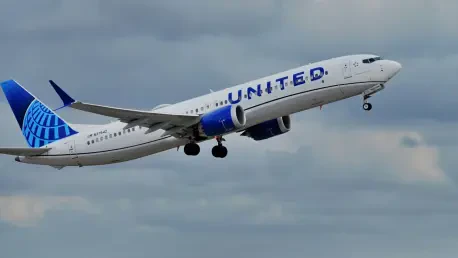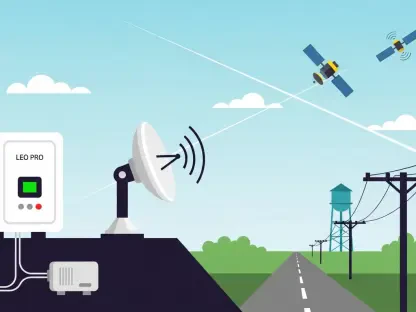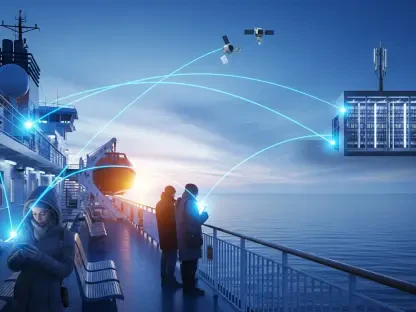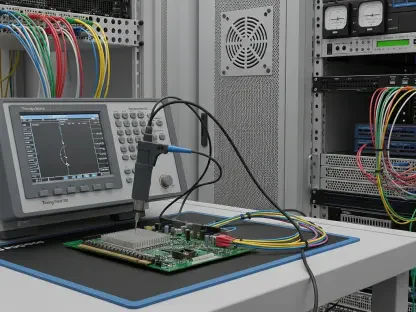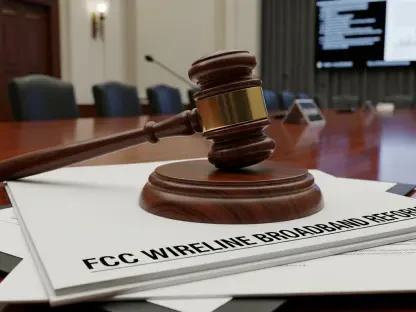As airlines continue to compete for passenger preference, enhancing in-flight connectivity has become crucial, and United Airlines has embarked on this journey with its ambitious plan to upgrade to Starlink Wi-Fi. This initiative promises to transform the in-flight experience on United’s regional fleet, starting with the integration of this advanced satellite technology on their Embraer E175 jets. However, airline endeavors seldom proceed without obstacles, as evidenced by the recent suspension of Starlink Wi-Fi due to interference issues. Despite these challenges, United remains committed to overcoming the technical hurdles and rolling out the advanced Wi-Fi to improve communication and internet speed for its passengers.
Troubleshooting Interference Challenges
Addressing Communication Interruptions
The unexpected radio interference that disrupted pilots’ communication systems has become a temporary hurdle in United Airlines’ Starlink Wi-Fi deployment. Pilots began reporting static issues affecting vital VHF radio communications soon after transmitting messages on aircraft equipped with the new antennas. This malfunction is particularly concerning as VHF radios form an essential communication link with air traffic control, ensuring safe navigation and operation. United’s decision to suspend Wi-Fi operations on over 20 aircraft underscores the airline’s prioritization of safety, reassuring the public that the safety of flights remains unchanged.
Mitigating this technical setback required collaboration with Starlink engineers to swiftly pinpoint the source of the issue and develop a viable solution. The airline’s prompt intervention has led to the successful identification and implementation of corrective measures on a significant percentage of the affected aircraft, ensuring no disruption in flight services or cancellations. The resolution process is seamlessly woven into routine maintenance schedules, preventing any unwelcome delays or effects on passengers’ travel plans. Such proactive management is crucial as United aims for a systematic rollout of Starlink technology across its fleet.
Proactive Solutions and Strategic Planning
United Airlines’ experience with previous interference issues, notably with Viasat systems, has served as a critical learning point, enabling the airline to refine and expedite problem-solving processes. Drawing from these past instances, United is paving the way toward the successful deployment of Starlink systems, reflecting its determination to enhance service offerings. The ongoing retrofitting efforts have led to a third of the affected airplanes regaining Wi-Fi services. This progress is a positive indicator that, despite unforeseen hindrances, United’s fleet-wide integration plan is on track.
United Airlines’ strategic approach during this phase includes addressing technical obstacles and scaling the Starlink technology across more of its regional fleet. This not only encompasses an additional fleet of Embraer E175 aircraft but also extends to future installations on Bombardier CRJ-550 jets. The airline has set forth aggressive timelines, aiming for project completion by the end of the year. This ambitious undertaking is driven by the broader vision of modernizing in-flight experiences, making them more in line with contemporary passenger expectations.
A Future of Connectivity and Passenger Experience
Advancing Towards Seamless Connectivity
The current downtime in Starlink Wi-Fi availability is seen as a temporary roadblock in United Airlines’ commitment to reshape in-flight connectivity. Passengers traveling from hubs like Chicago O’Hare and Denver may experience inconvenience, particularly during the summer months, traditionally marked by peak travel times. United’s ambition to replace its existing, often criticized Wi-Fi systems with advanced and reliable Starlink technology remains steadfast. This transition aims to elevate passenger satisfaction by ensuring consistent high-speed internet access, enhancing both communication efficiency and entertainment options.
United Airlines’ initiation of revenue flights equipped with Starlink technology earlier this year demonstrates strong confidence in the system’s capacity once fully integrated. Looking forward, the airline continues to emphasize customer satisfaction and technological innovation, reinforcing its stature in aviation industriousness. The introduction of complimentary high-speed Wi-Fi, accessible only with a MileagePlus account, aligns with United’s dedication to adding value to its passengers’ in-flight experience. This customer-centric approach underscores United’s commitment to technological advancements that foster improved connectivity and set it apart from competing airlines.
Balancing Innovation with Commitment to Safety
As airlines vie for customer favor, enhancing in-flight connectivity has become crucial, and United Airlines is at the forefront of this evolution with its ambitious plan to upgrade to Starlink Wi-Fi. This initiative aims to revolutionize the in-flight experience, particularly for United’s regional fleet. The plan begins with the integration of advanced satellite technology on their Embraer E175 jets, offering improved communication and faster internet speed for passengers. Nevertheless, airline projects rarely proceed without hiccups. United Airlines recently encountered a setback due to interference issues, leading to a temporary suspension of the Starlink Wi-Fi rollout. Despite these technical obstacles, United is determined to resolve them and ensure that passengers enjoy enhanced connectivity. Overcoming these challenges is crucial, as robust in-flight internet service can significantly elevate the passenger experience, offering seamless browsing, video streaming, and connectivity for work or leisure during flights.
